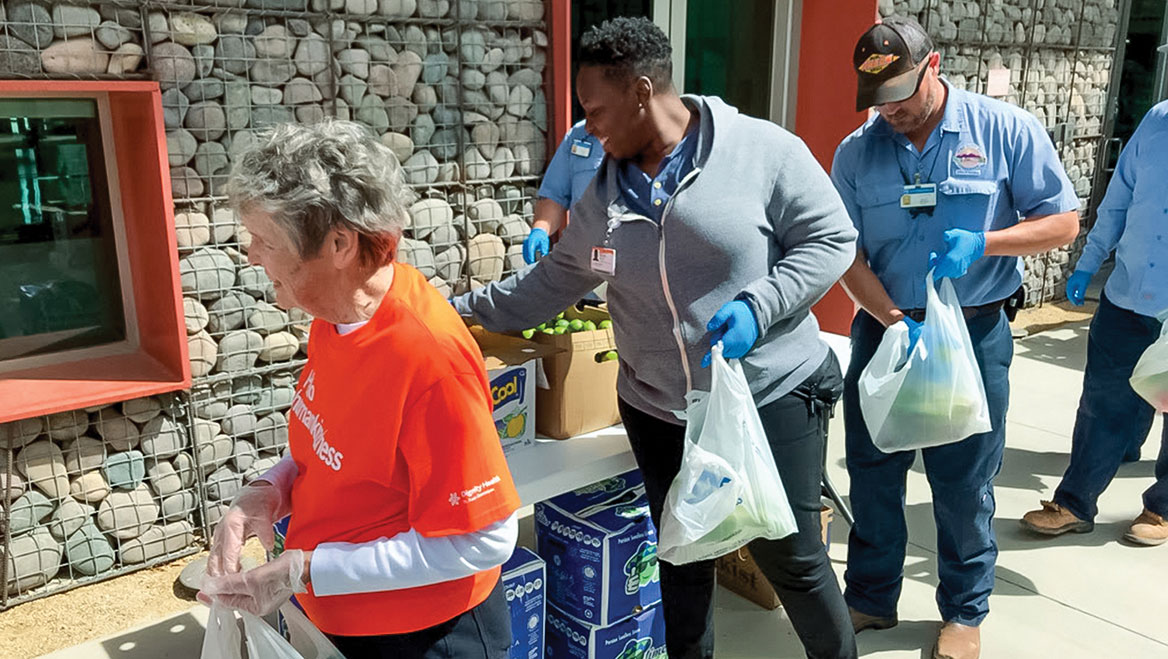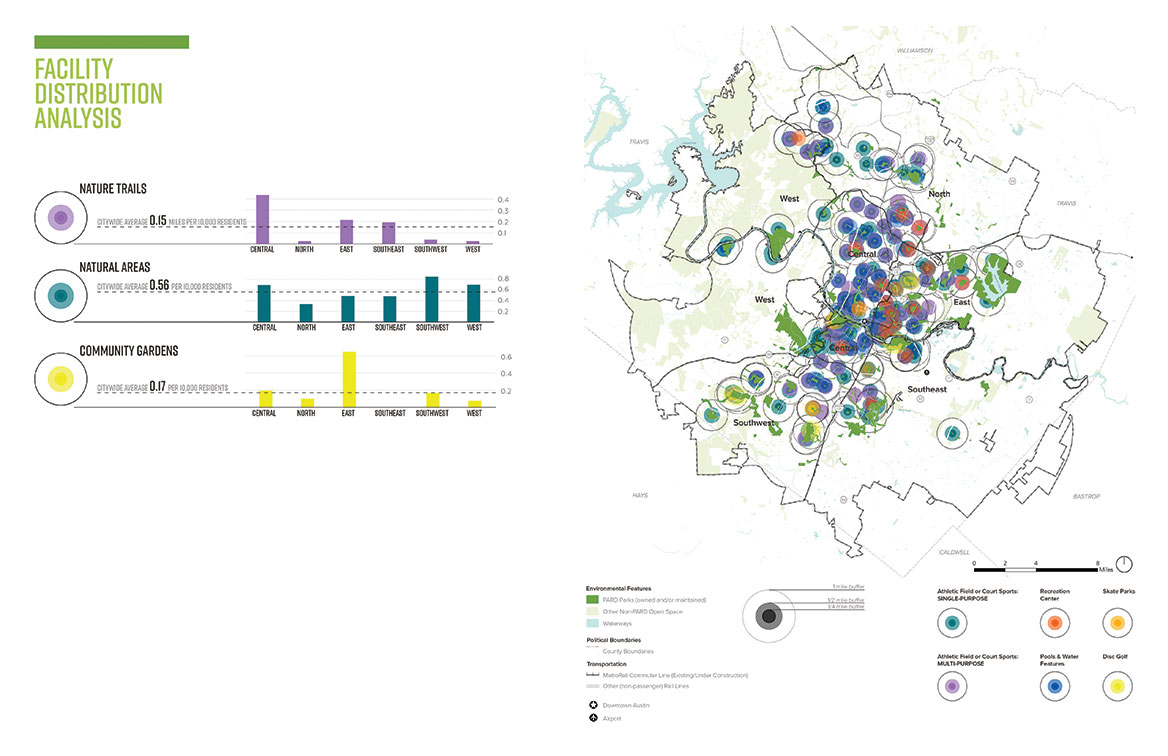June 10, 2021
While public trust in the federal government has remained at near-historic lows for years, it seems to be growing at the local level, according to Pew Research Center.
That positive relationship is a vital part of building more inclusive communities. It's also one planners are particularly suited to facilitate, as four projects recognized by this year's APA National Planning Awards are proving. From prioritizing marginalized groups in Virginia to providing targeted pandemic assistance in Nevada, these planning departments are putting residents in control of crucial decision making — and boosting local trust in the process.
Building new relationships
A long history of racist policies has left many of Richmond, Virginia's low-income residents of color distrustful of the planning process. The unanimously adopted Richmond 300: A Guide for Growth, the recipient of this year's Daniel Burnham Award for a Comprehensive Plan, aims to turn that dynamic around.
In 2017, Richmond's Department of Planning & Development Review (PDR) began a comprehensive planning process to create a forward-looking, citywide master plan, but planners soon realized they were falling short of their engagement goals with Latinx, Black, and low-income residents. The department paused other efforts in order to create a targeted community engagement team, trained and paid by the city to translate technical planning jargon into more everyday language and make the process more accessible. The resulting engagement helped identify six "Big Moves" to guide planning efforts and budgeting over the next five years, including expanding housing opportunities, reforming zoning, and making park access more equitable.
By adjusting course midway through the process, the city reached community voices that had gone unheard for years.
"The Richmond 300 planning process was centered around elevating marginalized and underrepresented people — people like me," says a lifelong Richmond resident who points to past master plans as contributors to generational displacement, destruction, and trauma. "I believe the adoption of this plan is the first step to undoing the legacy of redlining."

Richmond, Virginia, uses the above vision story to provide an accessible explanation of the new comprehensive plan's goals. Image courtesy of AECOM for Richmond, Virginia.
On the other side of the country, San Francisco Municipal Transportation Agency won APA's award for Advancing Diversity and Social Change in Honor of Paul Davidoff for a similar dedication to reaching underrepresented communities through the Bayview Community Based Transportation Plan (Bayview CBTP). To ensure that trusted community partners were not tokenized during the process, planners worked directly with staff from each organization at every step of public outreach. Their input led to recommendations like offering interpreters, full meals, and childcare at all stand-alone workshops. Innovative engagement techniques also included a Youth Transportation Summit, a documentary film developed by Bayview youth, and community recalibration of a GIS-based Equity Index tool.
Through these efforts, Bayview CBTP amplified the community's voice with policy recommendations that extend beyond transportation challenges to tackle everything from safety to workforce development, fare enforcement, and anti-displacement strategies. Local planners hope it's only the start.
"The value of planning is people," says project planner and engineer Ariel Ward. "It is building relationships with people. It is serving people. I think at the heart of any good planning effort should be people."
Maintaining trust
Good planning doesn't stop with establishing strong partnerships — those relationships need to be maintained through years of transparency and accountability. In Henderson, Nevada, winner of APA's Resilience & Sustainability Award, long-standing community relationships were put to the test — and strengthened — during the COVID-19 pandemic.
With the help of previous plans, including a 2016 National Planning Award winner for public outreach, the city was able to swiftly mobilize a response team to support residents in the early days of the pandemic and develop a regionwide recovery action plan, Together, We Can: A Primer for Recovery.

Henderson, Nevada, partnered with local nonprofits during the pandemic to provide home grocery deliveries to elderly residents sheltering in place. Photo courtesy of Henderson, Nevada.
With COVID-safe, innovative approaches like a grassroots ambassador program, a mobile food pantry, and a dedicated hotline, planners united with residents, community leaders, and elected officials to share critical information and ensure resources were distributed quickly and equitably to the region's most vulnerable people and first responders.
Together, We Can outlines staggered action items that responded to the immediate crisis with an eye toward a sustainable economic recovery in the long-term. Henderson officials say they are proud of the city's track record of keeping COVID infection rates low and testing and vaccination rates high over the past year — and think that having built trust with the community was a key factor.
Leveraging positive relationships with community stakeholders was also key to redefining public space in Austin, Texas, through Our Parks, Our Future, the winner of this year's Planning Excellence Award.
Every 10 years, Austin's Parks and Recreation Department (PARD) creates a long-range plan to guide growth of the park system. And while the city already boasts a strong history of civic participation, the department and planning firm WRT upped that this time around by prioritizing engagement with underrepresented communities of color, non-English speakers, and residents with disabilities.

The Austin, Texas, planning team conducted this spatial analysis of area parks and recreational facilities to identify opportunities for increased investment. Source: Our Parks, Our Future.
Building upon tried-and-true engagement techniques like community workshops, pop-up events, surveys, and focus groups, they also worked with a community advisory committee and a technical advisory group to elevate those voices and meet their needs.
With clear ties to other citywide initiatives like the Austin Strategic Mobility Plan and an ESRI StoryMap to keep residents up to date on implementation, Our Parks, Our Future aims to empower residents by helping them become park stewards — and demonstrates an overall commitment to environmental justice and equitable park access.




